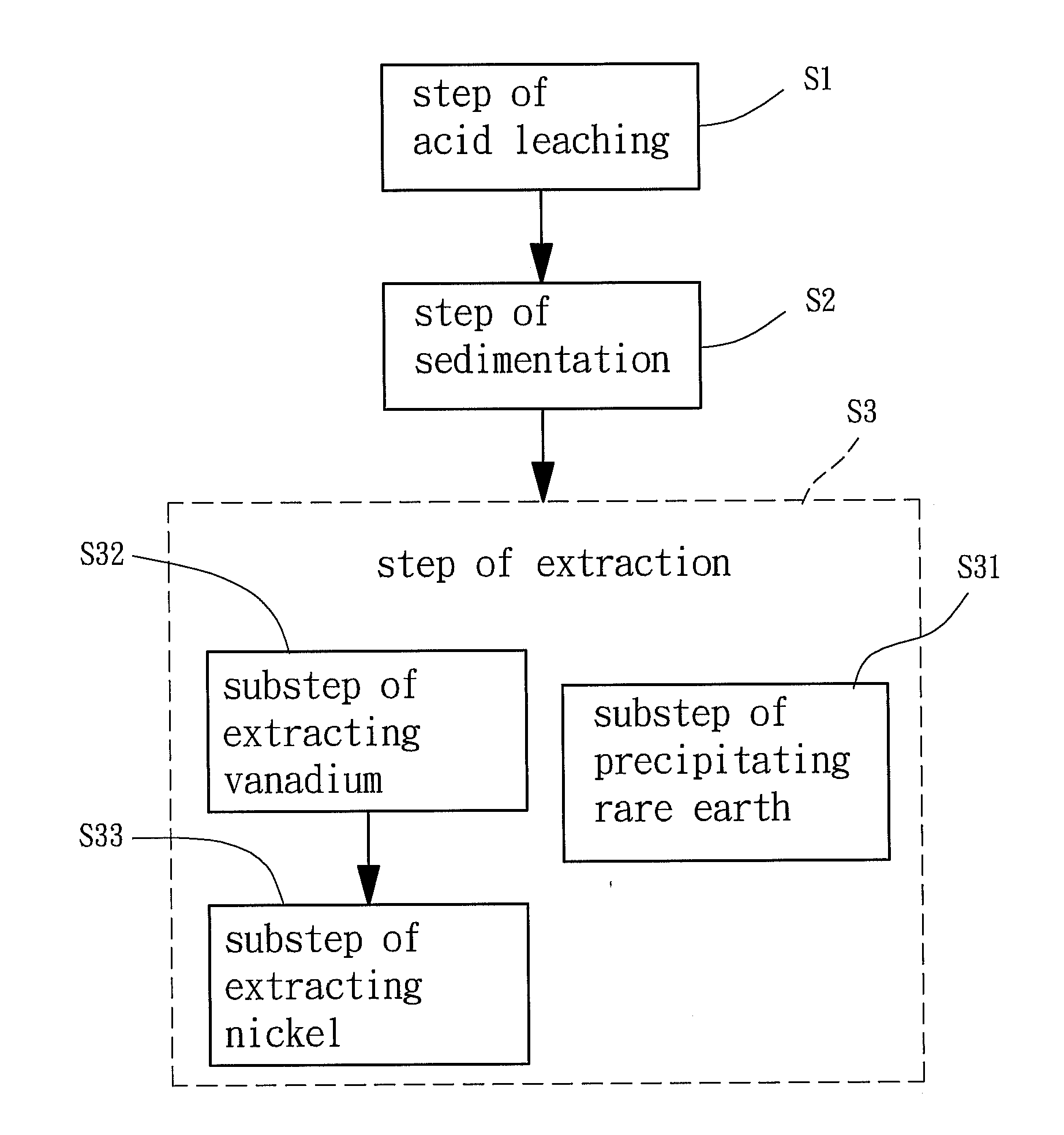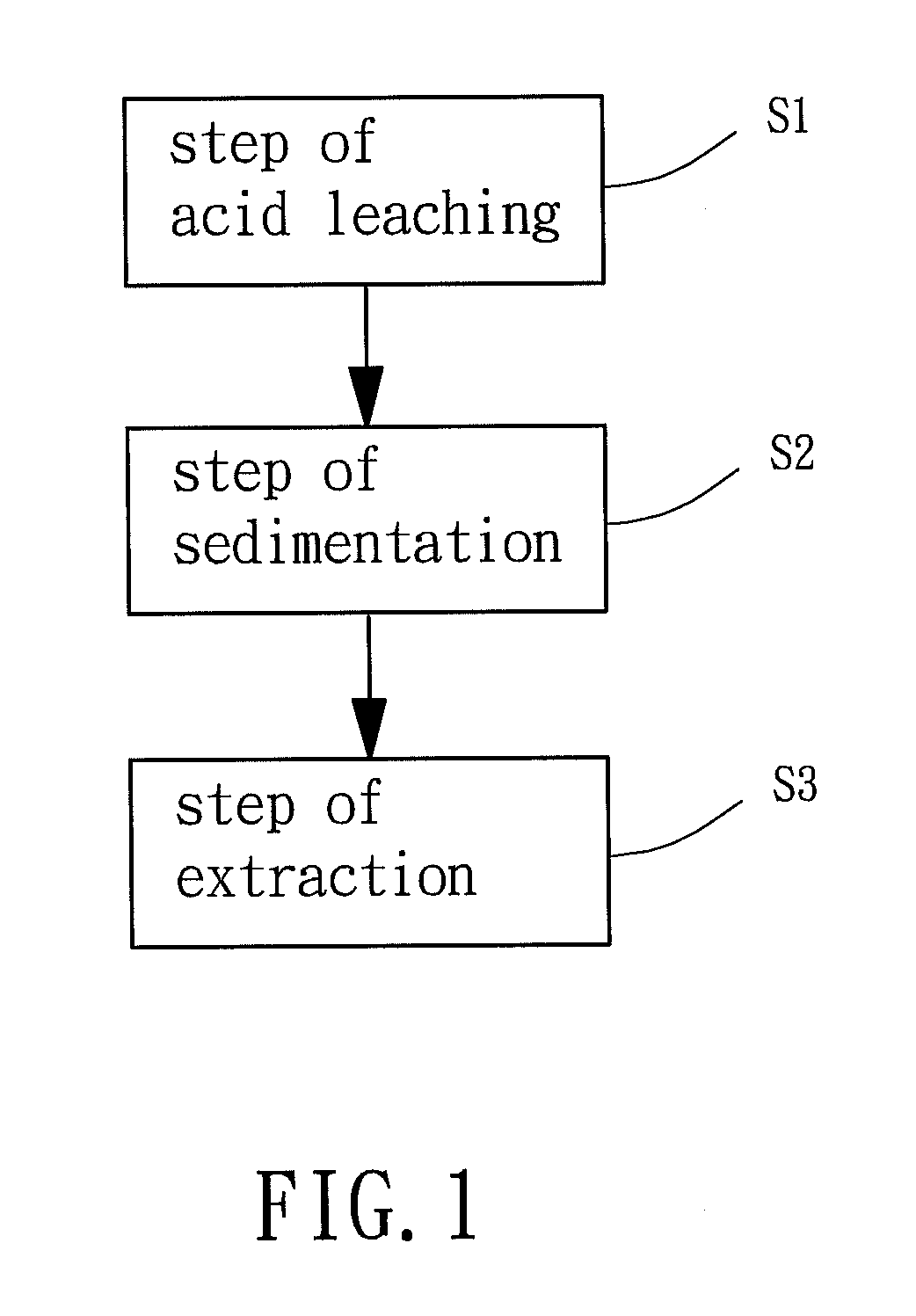Method for recovering rare earth, vanadium and nickel
a vanadium and nickel technology, applied in the field of rare earth, vanadium and nickel recovery from waste vanadiumnickel catalysts, can solve the problems of poor efficiency of roasting-acid leaching methods, serious pollution or ecological crisis, environmental damage, etc., and achieve the effect of high quality
- Summary
- Abstract
- Description
- Claims
- Application Information
AI Technical Summary
Benefits of technology
Problems solved by technology
Method used
Image
Examples
Embodiment Construction
[0020]In accordance with FIG. 1, there is a preferable embodiment of the method for recovering rare earth, vanadium and nickel from waste vanadium-nickel catalysts, which comprises a step of “acid leaching S1,” a step of “sedimentation S2,” and a step of “extraction S3.”
[0021]In the step of “acid leaching S1,” waste vanadium-nickel catalysts are prepared and soaking into a sulfuric acid solution to obtain a mixture in which contains alumina silica slag. Precisely, the waste vanadium-nickel catalysts are mainly collected from oil-refining industries and are rich in rare earth, vanadium and nickel. Through soaking the waste vanadium-nickel catalysts into the sulfuric acid solution, a great amount of the alumina silica slag will produce due to the inaction between insoluble parts of the waste vanadium-nickel catalysts, such as aluminum and silica, and the sulfuric acid solution. Meanwhile, the oxidization of sulfuric acid releases lots of heats which can not only maintain the reaction ...
PUM
| Property | Measurement | Unit |
|---|---|---|
| Temperature | aaaaa | aaaaa |
| Temperature | aaaaa | aaaaa |
| Fraction | aaaaa | aaaaa |
Abstract
Description
Claims
Application Information
 Login to View More
Login to View More - R&D
- Intellectual Property
- Life Sciences
- Materials
- Tech Scout
- Unparalleled Data Quality
- Higher Quality Content
- 60% Fewer Hallucinations
Browse by: Latest US Patents, China's latest patents, Technical Efficacy Thesaurus, Application Domain, Technology Topic, Popular Technical Reports.
© 2025 PatSnap. All rights reserved.Legal|Privacy policy|Modern Slavery Act Transparency Statement|Sitemap|About US| Contact US: help@patsnap.com



